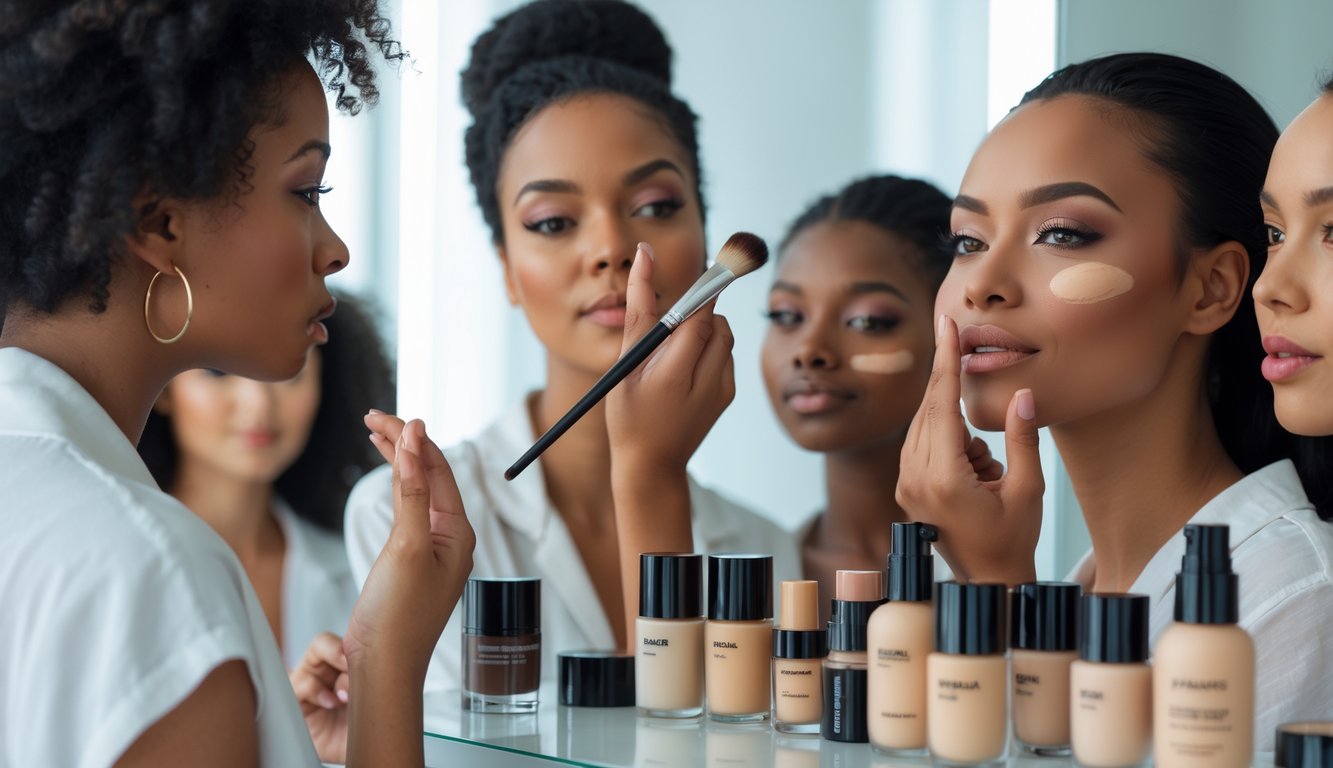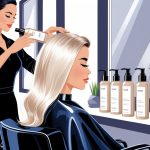Foundation Shade Swaps Makeup Artists Secretly Rely on for Natural Results
I mean, can we talk about how foundation shade matching is basically a scam? Last week I grabbed what I thought was my “perfect” shade—looked fine in my bathroom, but then I caught that neon orange jawline in the elevator mirror. Humiliating. Pros? They don’t even bother with those shade charts. I’ve watched artists just grab random bottles, mix them up, finger-paint on the back of their hands, and somehow it always looks right. I swear, they’re wizards. The real trick is mixing two or three shades, maybe throwing in a color corrector, and then pretending you meant to do that all along. “Neutral beige” my ass—half the time it’s pinker than a sunburn.
You ever hear about that “21 shades from three bottles” thing? Sounds fake, but yeah, I’ve seen it. Nobody’s lugging around 50 bottles, so you just make do. Match My Makeup’s tool? I know a client who swears it’s magic, but honestly, I’ve seen her look way better after her artist just dabbed a warmer color around her hairline. Undertones are everything, but nobody agrees on what “neutral” actually means. Yellow-based foundations for neutral skin? Never works, but good luck convincing anyone. And for the love of all that’s holy, before you buy another bottle, just try mixing what you’ve got. You might actually like it. Or not. I don’t know, I’m not your mom.
The Importance of Selecting the Right Foundation Shade

I refuse to reapply three layers after lunch just because my jaw looks like a paint swatch under the office lights. If your foundation shade’s right, it should melt in, not float on top of your face like a weird mask. I see influencers act like this isn’t a problem, but come on, we all know they’re lying.
How Shade Affects Natural Results
I once wore a foundation two shades too light because the sales girl said it would “brighten” me up. Uh, no. My face looked like a ghost in every photo. Foundation should disappear, not announce itself. Neil Scibelli keeps saying shade mismatch is the #1 makeup fail, and I believe him. I mean, have you seen some of those red carpet photos? Yikes.
Trying to fix a bad shade with bronzer? Please. That always ends up patchy, and once it oxidizes, it’s just embarrassing. Doesn’t matter if you’ve got the fanciest formula—if the shade’s off, it’s off. I’ve seen artists with ten years’ experience mixing up palettes because “close enough” just isn’t good enough for HD cameras. Or, you know, real life.
The Influence of Skin Tone and Undertone
Skin tone’s just the start. My undertone is somewhere between cool and neutral and nothing ever matches. Undertones—warm, cool, olive, whatever—everybody argues about them and nobody agrees. But they show through. Scibelli says undertones are the real reason stuff looks good or weird in daylight.
And that vein trick from Pinterest? Total myth for like, half of us. The only thing that works is swatching along the jawline and checking in every possible light: bathroom, daylight, Uber backseat. Artists love those 5-color palettes (Graftobian, anyone?) and they’re right, I guess. I used to think it was overkill, but now I get it. Guessing your undertone just leads to foundation that sits on top of your skin, looking crusty or weirdly orange. Who has time for that?
Understanding Skin Characteristics for Accurate Matching
If someone tries to hand me “universal rules” for foundation, I’m out. Shades act like mood rings depending on your undertones and whatever disaster is happening on your skin that day. This is where the pros really stress out: nothing ruins a look faster than ignoring undertones or pretending your flaky T-zone isn’t going to sabotage everything.
Evaluating Undertones: Warm, Cool, and Neutral
Honestly, I don’t think anyone knows their undertone until they’ve bought three wrong foundations. Skip this and you’ll look like you tried to cosplay a traffic cone. “A foundation can be slightly too dark or light as long as the undertone matches,” Yaitanes says (and says, and says). That’s the secret: the foundation’s “temperature”—is it yellow, pink, beige?—matters more than the number.
Supposedly, green veins mean warm undertones (so, golden or peachy), blue/purple veins mean cool (pink, red, blue), and neutral is, well, whatever’s left. In summer, my undertone just gives up and does its own thing. Findation.com? Tried it, still doubted myself. If it looks weird at the jaw, toss it. Swatch across your face and neck, don’t trust the back of your hand. Foundation is not a Halloween mask, unless that’s your vibe.
Considering Skin Texture and Type
Here’s the part nobody talks about: skin texture and type. I used to obsess over color, but nothing ruins a good match faster than foundation clinging to dry skin or sliding off my nose before I get to work. It’s not just about oil or dryness—pores, acne, fine lines, peach fuzz, all of it changes how foundation sits. Most people? Oily T-zone, dry cheeks, chaos everywhere else.
I keep juggling formulas: matte for shine, hydrating for flakes, silicone primer for, well, everything. Brands claim their stuff works for everyone—lies. Texture beats color every time, especially if you’re taking selfies or, God forbid, sitting under daylight. Foundations with light-diffusing pigments (MAC Studio Fix, NARS Sheer Glow, whatever) hide texture way better than just picking the right shade. Sometimes I just smear two formulas together right on the skin because, honestly, who’s judging?



